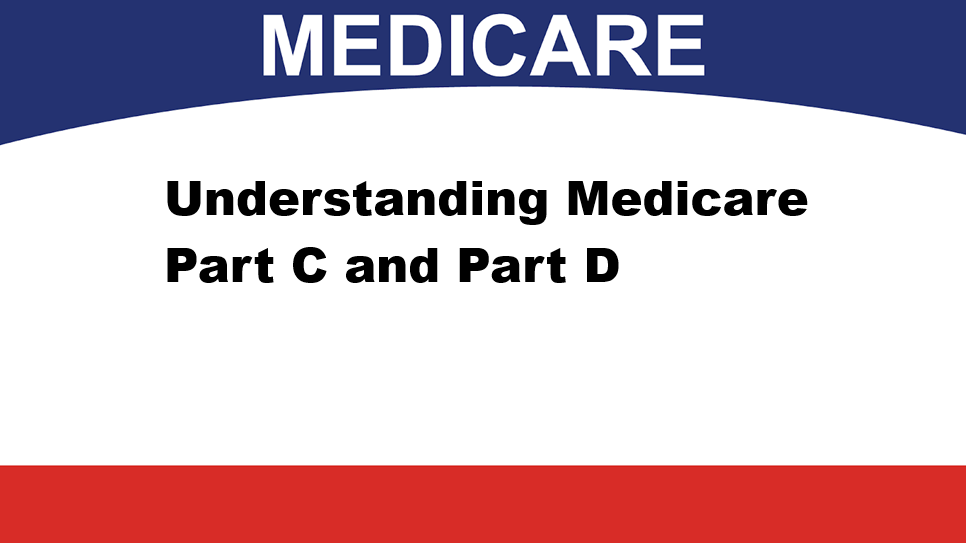Understanding Medicare Part C and Part D

Published: Oct 19, 2024
Written By: Insurance Storefronts
Medicare can sometimes feel overwhelming with its various parts and coverage options. To help clarify things, let’s take a closer look at Medicare Part C (Medicare Advantage) and Medicare Part D (Prescription Drug Plans) and what they offer to beneficiaries.
What is Medicare Part C?
Medicare Part C, commonly known as Medicare Advantage, is an alternative to Original Medicare (Parts A and B) that is offered through private insurance companies approved by Medicare. Part C plans provide the same coverage as Original Medicare but often include extra benefits that aren’t covered under Parts A and B.
These additional benefits may include:
- Prescription Drug Coverage: Many Medicare Advantage plans include prescription drug coverage, which means you don’t need a separate Part D plan.
- Dental, Vision, and Hearing Services: Some plans offer routine dental, vision, and hearing services, which are not included in Original Medicare.
- Wellness Programs: Medicare Advantage plans often include gym memberships, health screenings, and other wellness incentives.
Medicare Advantage plans can be HMOs (Health Maintenance Organizations), PPOs (Preferred Provider Organizations), or other plan types, each with different network restrictions and costs. When selecting a plan, it’s important to consider whether your preferred healthcare providers are in-network, as out-of-network care may cost more with some Medicare Advantage plans.
What is Medicare Part D?
Medicare Part D provides prescription drug coverage and is available either as a stand-alone plan for those with Original Medicare or as part of a Medicare Advantage plan with prescription drug coverage (MA-PD). Like Medicare Advantage, Part D plans are offered by private insurance companies and can vary in terms of cost and coverage.
Key aspects of Medicare Part D include:
- Formulary: Each Part D plan has a list of covered drugs, known as a formulary, which categorizes medications into different tiers. Lower-tier drugs typically cost less, while higher-tier or specialty drugs may have higher copays or coinsurance.
- Coverage Phases: Part D plans have different coverage phases, including the initial coverage phase, coverage gap (commonly known as the “donut hole”), and catastrophic coverage. The coverage gap occurs when you and your plan spend a certain amount on prescription drugs, at which point you may pay more out-of-pocket until you reach catastrophic coverage.
How to Choose Between Medicare Part C and Part D
If you choose Original Medicare (Parts A and B), you’ll need a separate Part D plan for prescription drug coverage. However, if you enroll in a Medicare Advantage plan, many plans already include Part D drug coverage, meaning you get all your health and drug coverage in one plan.
When selecting a plan, consider factors like:
- Cost: Compare premiums, copays, deductibles, and out-of-pocket maximums.
- Coverage: Check if your medications are on the plan’s formulary and if your healthcare providers are in-network.
- Convenience: Some Medicare Advantage plans offer all-in-one coverage, while Original Medicare requires a separate Part D plan for prescriptions.
Conclusion
Medicare Part C and Part D are key components in providing comprehensive healthcare coverage for beneficiaries. Medicare Advantage (Part C) plans often bundle additional benefits, while Part D focuses specifically on prescription drug coverage. Evaluating your healthcare needs and preferences will help you determine the best plan for your situation.
For more information or assistance comparing plans, contact an independent Medicare Insurance Storefronts agent.
Recent Blog Posts
Medicare Part D
Understanding Drug Coverage Plans and Home Delivery OptionsMedicare Part D
When is the Medicare Part D Open Enrollment Period?Medicare Supplement (Medigap)
Understanding At-Home Doctor Visits for Medicare PatientsMedicare Supplement (Medigap)
Understanding the Initial Enrollment Period for Medicare